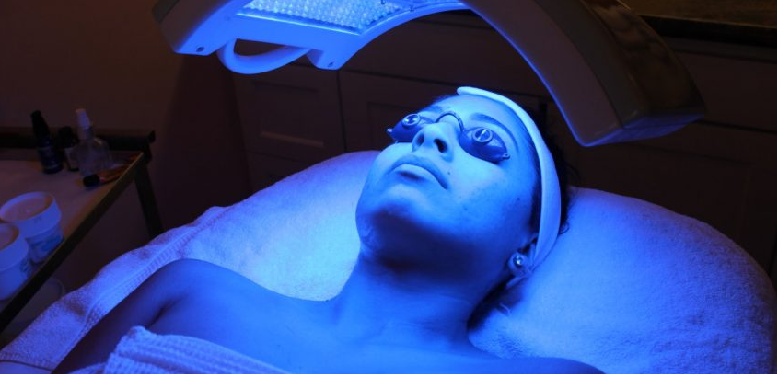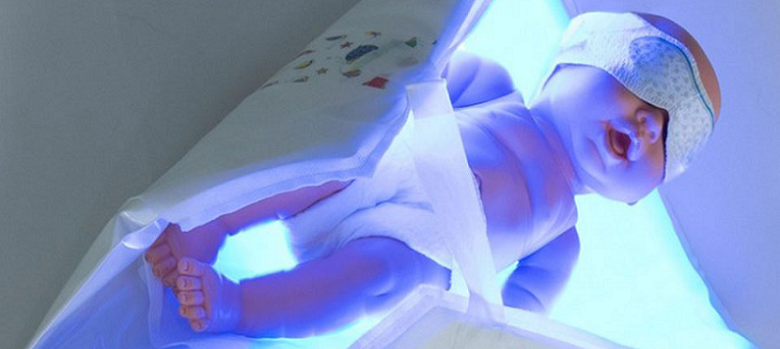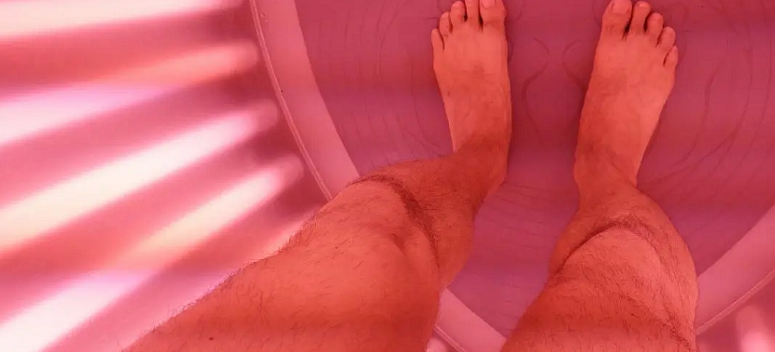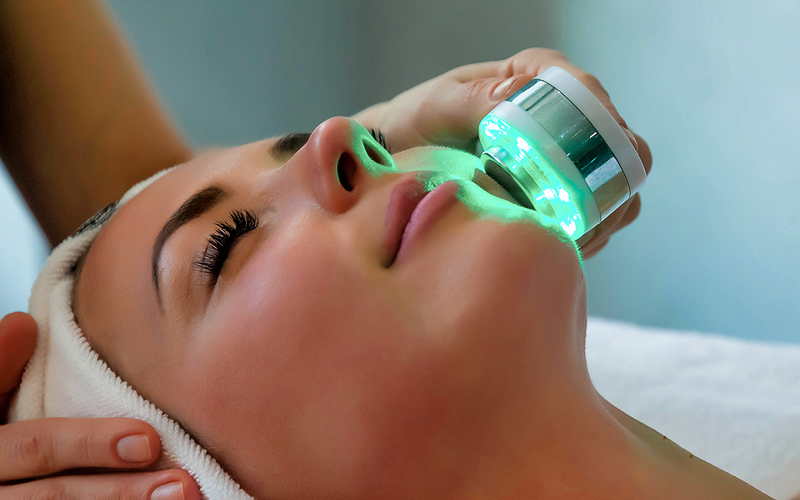Phototherapy, also known as light therapy, is a non-invasive treatment that uses light to improve physical and mental health. It has been used for centuries for a variety of conditions and has gained popularityl in recent years as a natural alternative to traditional treatments. The science behind phototherapy is based on the understanding of how light affects the body, from regulating our sleep-wake cycle to boosting our mood and immunity.
What Is Phototherapy?
Phototherapy is a type of medical treatment that uses specific wavelengths of light to improve physical and psychological well-being. This therapy can take various forms, including exposure to bright light, laser light, or narrow-band light. Phototherapy has been found to be effective in treating a range of conditions, including skin disorders, mood disorders, and seasonal affective disorder (SAD). The science behind phototherapy is based on the idea that light affects our body’s natural circadian rhythms and can trigger various physiological responses that lead to therapeutic benefits.
The Science of Phototherapy
The science of phototherapy is based on the idea that light affects our body’s natural circadian rhythms and can trigger various physiological responses that lead to therapeutic benefits. Light therapy works by exposing the patient to specific wavelengths of light, which are chosen based on the condition being treated. For example, bright light therapy is often used to treat seasonal affective disorder (SAD) and mood disorders, while narrow-band UVB light therapy is commonly used to treat skin conditions like psoriasis.
The role of light in our bodies is complex and intertwined with many of our physiological processes. Light exposure affects the release of hormones like melatonin and serotonin, which play a role in regulating our sleep-wake cycle and mood. Additionally, light can also stimulate the production of endorphins, which are natural painkillers, and boost our immune system by increasing the production of white blood cells.

The way that phototherapy works specifically depends on the type of light being used. For example, bright light therapy works by increasing the levels of serotonin in the brain, which can help to improve mood and reduce symptoms of depression. Narrow-band UVB light therapy works by reducing inflammation and slowing down the growth of skin cells, making it an effective treatment for skin conditions like psoriasis.
The science of phototherapy is based on the idea that light can affect our bodies in various ways and trigger therapeutic benefits. Whether it’s through regulating our hormones, boosting our immune system, or reducing inflammation, phototherapy has been shown to be an effective form of treatment for a range of physical and psychological conditions.
Benefits of Phototherapy
Phototherapy has a range of benefits, both physical and psychological. Some of the key benefits of phototherapy follow.
Improving Mood and Reducing Stress
One of the key benefits of phototherapy is its ability to improve mood and reduce stress. This is particularly true for conditions like seasonal affective disorder (SAD) and depression, where exposure to bright light has been found to be an effective form of treatment.
The science behind this benefit of phototherapy is based on the role that light plays in regulating our hormones and circadian rhythms. Light exposure can affect the release of hormones like serotonin and melatonin, which play a role in regulating our sleep-wake cycle and mood. When we are exposed to bright light, our brains release more serotonin, which is known as the “feel-good” hormone. This increase in serotonin can help to improve mood and reduce symptoms of depression.
In addition to improving mood, phototherapy can also help to reduce stress. This is because exposure to bright light can help to regulate our circadian rhythms, which can improve our sleep patterns and reduce feelings of fatigue and stress. By improving our sleep-wake cycle, phototherapy can help to reduce feelings of stress and anxiety and improve our overall sense of well-being.
Improving mood and reducing stress are important benefits of phototherapy. By exposing patients to bright light, phototherapy can help to increase the levels of serotonin in the brain, regulate our circadian rhythms, and improve our sleep patterns. These effects can help to reduce symptoms of depression and stress and improve overall mental health and well-being.

Treating Skin Conditions
Phototherapy is also commonly used to treat skin conditions such as psoriasis, eczema, and vitiligo. These skin conditions can cause inflammation, redness, and itching, making them uncomfortable and sometimes painful. Phototherapy can be an effective form of treatment because it can reduce inflammation and slow down the growth of skin cells.
The science behind this benefit of phototherapy is based on the use of narrow-band UVB light. This type of light therapy works by reducing inflammation and slowing down the growth of skin cells. By reducing inflammation, phototherapy can help to reduce redness, itching, and other symptoms associated with skin conditions like psoriasis. Additionally, by slowing down the growth of skin cells, phototherapy can help to prevent the formation of new psoriasis lesions.
In addition to reducing inflammation and slowing down the growth of skin cells, phototherapy can also help to improve the overall appearance of the skin. This is because exposure to UVB light can stimulate the production of vitamin D in the skin, which can help to improve skin health and reduce the appearance of skin conditions like psoriasis.
Treating skin conditions is an important benefit of phototherapy. By using narrow-band UVB light, phototherapy can reduce inflammation, slow down the growth of skin cells, and improve the overall appearance of the skin. Whether it’s for reducing symptoms of psoriasis, eczema, or vitiligo, phototherapy can be a safe and effective form of treatment for skin conditions.
Boosting Immunity
Phototherapy can also have a positive impact on the immune system, making it an effective treatment for conditions like psoriasis that are caused by an overactive immune system. This benefit of phototherapy is based on the ability of light to stimulate the production of white blood cells, which play a key role in our immune system.
White blood cells are responsible for defending our bodies against infections and other harmful invaders. By increasing the production of white blood cells, phototherapy can help to boost our immune system and improve our overall health. This is especially important for conditions like psoriasis, where an overactive immune system can lead to inflammation and skin irritation.
In addition to boosting the immune system, phototherapy can also help to reduce inflammation. This is because exposure to UVB light can reduce the production of cytokines, which are proteins that play a key role in inflammation. By reducing the production of cytokines, phototherapy can help to reduce inflammation and improve the overall health of the skin.
Boosting immunity is an important benefit of phototherapy. By increasing the production of white blood cells and reducing inflammation, phototherapy can help to improve our overall health and treat conditions like psoriasis that are caused by an overactive immune system. Whether it’s for improving skin health or boosting immunity, phototherapy is a safe and effective form of treatment that can have a positive impact on our overall well-being.
Relieving Pain
Phototherapy can also be an effective form of treatment for pain relief. This is because light therapy can stimulate the production of endorphins, which are natural painkillers produced by the body. By increasing the production of endorphins, phototherapy can help to reduce pain and improve overall quality of life.
The science behind this benefit of phototherapy is based on the role that light plays in regulating our hormones and neurotransmitters. Light exposure can affect the release of hormones like serotonin and endorphins, which play a role in regulating our pain response. By increasing the production of endorphins, phototherapy can help to reduce pain and improve overall well-being.

In addition to reducing pain, phototherapy can also help to improve sleep patterns. This is because exposure to light can help to regulate our circadian rhythms, which can improve our sleep patterns and reduce feelings of fatigue and stress. By improving our sleep-wake cycle, phototherapy can help to reduce feelings of stress and anxiety and improve our overall sense of well-being.
Relieving pain is an important benefit of phototherapy. By stimulating the production of endorphins and improving our sleep-wake cycle, phototherapy can help to reduce pain and improve overall quality of life. Whether it’s for reducing pain associated with conditions like arthritis and fibromyalgia, or improving overall well-being, phototherapy is a safe and effective form of treatment that can have a positive impact on our health and well-being.
In addition to these specific benefits, phototherapy is also non-invasive, has few side effects, and can be a convenient and effective alternative to other forms of treatment. Whether it’s for improving mood, treating skin conditions, or boosting immunity, phototherapy is a safe and effective form of treatment that has helped many people improve their quality of life.
Risks and Precautions of Phototherapy
While phototherapy is generally considered safe, there are some risks and precautions that should be considered before undergoing treatment. Some of the possible side effects of phototherapy include skin irritation, eye strain, and fatigue. Additionally, certain individuals may not be suitable candidates for phototherapy, including those with certain skin conditions, those who are taking certain medications, and those who are pregnant or breastfeeding.
It’s also important to use phototherapy in a safe and controlled environment. This means using appropriate protective eyewear, avoiding overexposure to light, and consulting with a healthcare professional to determine the appropriate type and frequency of treatment.
In addition to these general precautions, it’s also important to be aware of the specific risks and contraindications associated with each type of phototherapy. For example, bright light therapy can cause eye strain and fatigue, while narrow-band UVB light therapy can increase the risk of skin cancer if used improperly.
In conclusion, while phototherapy is generally considered safe, there are some risks and precautions that should be considered before undergoing treatment. It’s important to consult with a healthcare professional, use phototherapy in a safe and controlled environment, and be aware of the specific risks and contraindications associated with each type of phototherapy. By taking these precautions, phototherapy can be a safe and effective form of treatment that can improve physical and psychological well-being.

